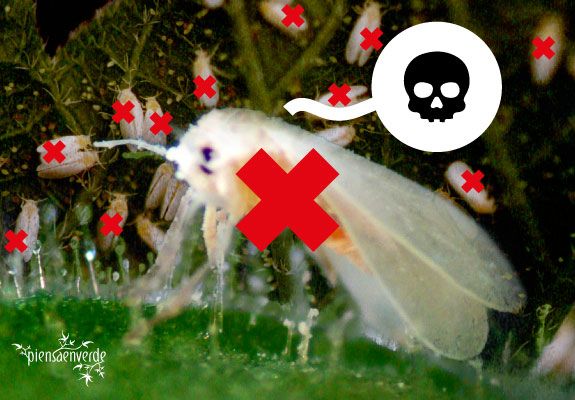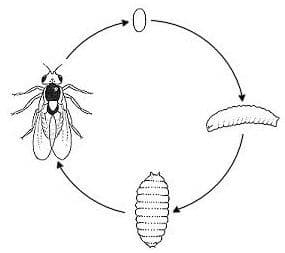

In constant struggle for the regulation of cannabis, mainly in the medicinal field.
19-12-2016 07:00:14 - Updated: 19 December, 2016
The leafminer is a small white fly with a length between 0.14 and 0.5mm. Each adult female can put between 100 and 200 eggs, being its larva stage the most harmful form for the plants. The larvae form of this white fly is which feeds on the leaves and stems and harms our harvest, especially if we have young plants.
This insects are born, grow, reproduce and feed inside the leaves without damaging the leaf epidermis and even inside of young stems. The females of the leafminer lay the eggs inside the plant and when they hatch out, their larvae feed on inside the leaf, remaining wrapped between the two layers of the leaf making a series of galleries, undermining the inside of the leaf until they end completely with it: once devoured, it moves to other leaves to continue feeding.
The temperature that facilitates its procreation is between 29 and 32 degrees and with a high percentage of humidity.

In order to detect the leafminers we have to check out the leaves of our marijuana plants and observe if they have small tunnels or galleries inside the plants.
These kind of fly defends itself very well from the natural defenses of the plant and is very selective, always preferring the layers with less cellulose inside the leaves it consumes.
To eradicate this pest is not so easy if you are in an advanced state since fumigating the plant does not help because they are protected inside the leaf.
A big plague can destroy your crop as long as it damages the leaves reducing photosynthesis capacity by having less vegetal mass useful for the light absortion.
During spring, just before summer, is the correct time in which we have to put more attention to your plants, since heat and humidity is an ideal environment for them.
The seasonal stages ideal for leafminer proliferation are:
- April-May: the greatest development occurs in the colonization of the plant, significantly increasing its population.
- Summer: the plague spreads out, reaching its maximum.
- Autumn: the plague begins to decrease.
- Winter: very considerable decline in population.
In any case, the plague can occur in any month depending on the climatology, as it can be in an indoor crop, which can occur up to ten generations in a year.
As we indicated above, with a temperature between 29 and 32 degrees and a high humidity the stages of the insect are the following:
- –Egg: Approximately 1mm.
- –Larva: Once hatched the egg , larva comes out.
- –Pre-adult: The larva weaves a silken cocoon of yellowish color. These color becomes browner.
- –Adult: In this state the adult is a butterfly of between 2 and 4 mm of platinum white color.
This cycle lasts approximately 15-20 days.

To combat this pest we recommend:
- Prevention is better than cure. If the pest has already risen, it is recommended to eliminate all infected leaves or even eliminate the plant in very serious cases in order to not to affect to other plants near the pest.
- To treat the pest once established we can use:
- Neem oil: Spraying it on the plant will have no effect since the larvae are protected between layers, but using it in irrigation is introduced throughout the roots poisoning the insects when they eat, without harming the plant. You can use it once a week also as a preventive method.
- Bacillus thuringiensis: It is a bacteria that has the ability to control, eradicate or disrupt the development stages of pests without harming our cannabis plants.
To control a very advanced pest you can also prepare some home remedies like:
-Add 1 milliliter of hydrogen peroxide to one liter of water and then spray the plants with the preparation.
Another option is:
-Mole coffee and boil it in water until caffeine is released. Let it cool, filter it and with the solution, fumigate the plants.
Chemicals are not recommended since it does not work effectively and are toxic for humans and beneficial organisms.
If the pest spreads as long as your plants are in growing phase (not recommended during flowering due to its toxicity) you can use:
- Dimegreen 40
- Compo Perfection
- Rotenone
I hope my humble experience may help you!





